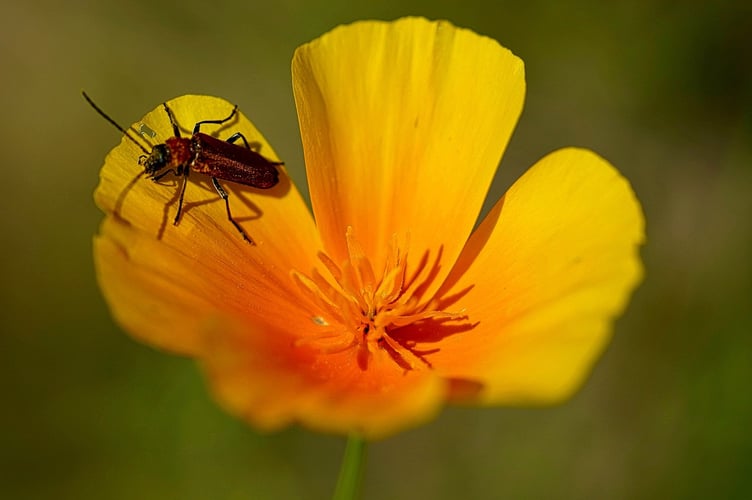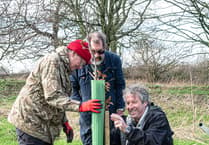Phew! What a busy Spring it was! After the lead up to the Open Gardens I thought I’d not need to do any gardening for the rest of the summer, but of course gardens always need attention!
Despite several seemingly good showers, the tubs and vegetables remained dry through June.
Sweet peas are now sporting only very short stems and the much re-sown spinach has gone to seed in protest! So it was a very hot day for the Open Gardens. Despite this, plenty of people valiantly made their way round as many gardens as possible and both gardeners and guests found it a most sociable afternoon. I had just managed to catch the Elderflower before it went over the week before, and with my mother’s 1957 wine making book, just seven heads of flowers, sugar, water, lemon and white wine vinegar made Elderflower champagne which had just worked up enough fizz by the day to share under the welcome shade of a big beech tree. Very pleasant.
Insect wise, there did seem to have been less butterflies and insects in general, until mid July when after a few showers, the insects reappeared. We hadn’t had the usual cluster of ladybirds overwintering in the corner of our bedroom window, but noticed a few around at end of June. I had pinched the tops out of the Broad Beans to reduce the number of black aphids as is traditional, only to see a ladybird scuttling up the stem, and thought oh dear, I’ve just thrown her supper away! In my defence, aphids can engulf the whole plant and pods leaving them brown and damaged.
I saw a great little black water beetle scurrying about in rain water that had collected in the wheel barrow. I thought “how did he get there – does it mean I have to tip him in the pond to be in his right environment?” However, as I picked up the wheelbarrow, the water tipped away from him and off he flew! Well, what an adaptable little amphibious creature that was! I later found it was a common black water beetle, which turns up wherever there is standing water and delights in the name of Agabus Bipustulatus!
In the big tidy up for the Open Gardens, I disturbed several more tiny creatures. As I tried in vain to pull out grass from a rock hard border, little round-bodied green spiders ran for their life, and I felt as guilty as if I’d been felling the Amazon forest! So I left the grass shortened at least, and then thought I’d just clip the edges of the border. Three tiny yellow frogs about the width of my little finger jumped out! Okay, this is where all the wild life hangs out – I’ll leave them alone!
Later, I saw a trio of brown froglets the same size, sunning themselves in a damp spot below the water tap amongst the clutter of pots of things that might grow, tree seedlings and a split bag of leafmold – a nicely damp habitat!
The bees were incredibly busy in June, with some keepers losing swarms as the bees ran out of space and looked for new lodgings. My husband was busy every day trying to keep ahead of them. It was a joy to see loads of bees working the Asparagus ferns, not something you think of as a great source of pollen. We also are hosting some unidentified black bees in the roof. Too fat for honey bees and wrong colour for wasps.
Sitting in the porch one glorious summer evening, we watched the numerous insects highlighted in the evening rays of sun. One species seemed to bob up and down as if on a piece of elastic! These turned out to be mosquitoes. The wings of others glowed orange in the suns rays and whilst balancing precariously on a stone wall, I managed to photograph them feeding on the flat flower heads of Lovage, together with several lady birds. I tried to use my Insect app but by the time I’d got through the preferences and options, I gave up before I fell off the wall! The internet later informed me these were likely to be Red Soldier Beetles, which seem to be a useful species feeding on pollen of open structured flowers like Cow Parsley, or Lovage, eating aphids and their larvae eating slugs and snails! By the way, I dont throw slugs in the pond, but over the stream where they can re-locate in the orchard with the stream as a barrier.




